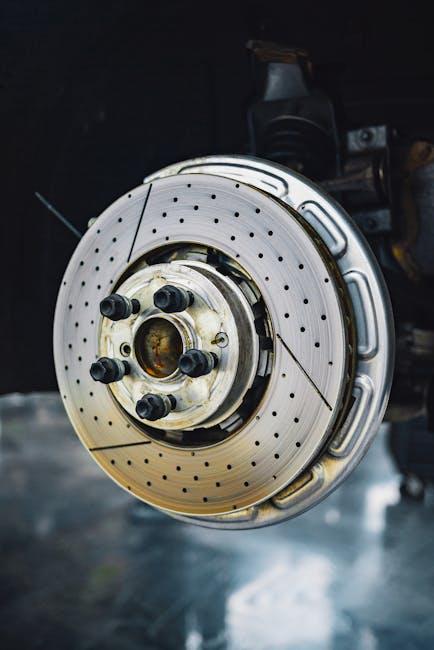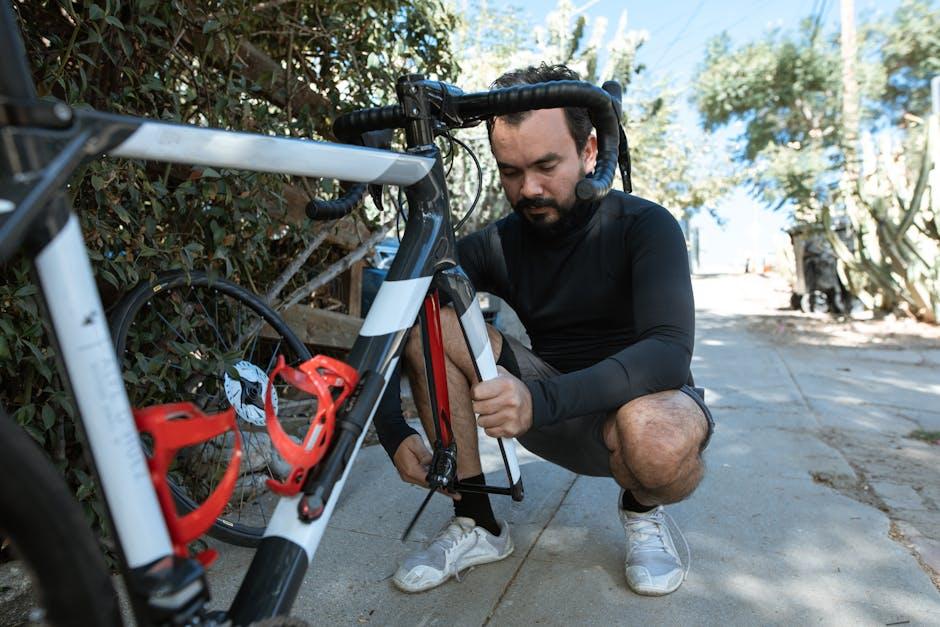When it comes to vehicle safety, the brake system stands as the silent guardian between control and catastrophe. Often taken for granted, this complex network of components quietly ensures that every stop is smooth and every journey secure. But what happens when this vital system begins to falter? Recognizing the subtle—and sometimes glaring—signs of a failing brake system can mean the difference between routine maintenance and an emergency on the road. In this article, we explore the key indicators that your brakes may be struggling, helping you stay informed and prepared before a small issue turns into a serious hazard.
Table of Contents
- Signs Your Brakes Are Struggling to Perform
- Unusual Sounds That Warn of Brake Trouble
- How Brake Response Changes Signal Hidden Issues
- Visual Clues to Spot Brake System Wear Early
- The Role of Brake Fluid in System Health and Safety
- Essential Maintenance Tips to Prevent Brake Failure
- Q&A
- The Conclusion

Signs Your Brakes Are Struggling to Perform
When your brakes begin to falter, they rarely do so quietly. You might notice a persistent squealing or grinding noise that serves as the first audible warning. Another telltale sign is increased stopping distance, meaning your vehicle takes longer than usual to come to a complete halt, which can be a dangerous situational red flag. Additionally, a brake pedal that feels “spongy” or soft when pressed can indicate air in the brake lines or worn brake fluid, signaling that your brake system isn’t responding with its usual firmness.
Visual and tactile clues to watch for include:
- Vibrations or pulsations in the brake pedal or steering wheel.
- Pulling to one side while braking, suggesting uneven brake wear or a stuck caliper.
- Brake warning light illuminated on the dashboard.
- Burning smell after heavy braking, hinting at overheated brake components.
| Sign | Possible Cause | Urgency Level |
|---|---|---|
| Squealing Noise | Worn Brake Pads | Medium |
| Spongy Brake Pedal | Air in Brake Lines | High |
| Vehicle Pulling | Unequal Brake Pressure | High |
| Brake Warning Light | System Failure or Fluid Low | Critical |

Unusual Sounds That Warn of Brake Trouble
When your brakes start to falter, the most telling signs often come through unexpected noises. These auditory warnings are your vehicle’s way of signaling distress, and ignoring them can lead to costly repairs or dangerous situations. Sharp squealing when you apply pressure to the pedal often indicates worn brake pads, as their built-in wear indicators scrape against the rotor to alert you early on. A grinding sound, however, is a more severe red flag; it usually means the brake pads are completely worn down, causing metal-to-metal contact that can damage the rotors.
Besides squealing and grinding, several other sounds might indicate brake trouble:
- Clicking or clunking noises – could point to loose or damaged brake components.
- Hissing sound – might suggest air in the brake lines or a brake fluid leak.
- High-pitched chirping – often linked to dust or debris trapped between the brake pads and rotor.
| Sound | Possible Cause | Recommended Action |
|---|---|---|
| Squealing | Worn brake pads | Inspect pads; replace if thin |
| Grinding | Metal-on-metal contact | Immediate brake service required |
| Clicking | Loose components | Tighten or replace parts |
| Hissing | Brake fluid leak or air in line | Check fluid; bleed brakes |
| Chirping | Debris or dust | Clean brakes |

How Brake Response Changes Signal Hidden Issues
When you notice that your brake response feels sluggish or inconsistent, it’s often more than just normal wear and tear. These subtle changes can be critical indicators of underlying complications within your braking system. A delayed response, for instance, may suggest air trapped in the brake lines or a leak causing fluid pressure loss. Similarly, an overly sensitive brake pedal might point towards worn brake pads or caliper issues, both of which require immediate attention to prevent further damage.
Understanding how brake response shifts can help you diagnose problems early, potentially saving you from costly repairs or unsafe driving conditions. Here are some common signs to look out for:
- Spongy or soft brake pedal – Often signals air in the brake lines or low brake fluid.
- Gradual sinking of the pedal – May indicate a hydraulic leak.
- Increased stopping distance – Could mean worn brake pads or rotor issues.
- Uneven pedal feel – Might be caused by uneven brake pad wear or caliper malfunction.
| Brake Response Issue | Possible Cause | Recommended Action |
|---|---|---|
| Delayed brake engagement | Air in brake lines | Brake fluid bleeding |
| Sinking brake pedal | Hydraulic leak | Check and repair brake fluid system |
| Harsh brake pedal | Worn calipers or pads | Replace brake pads/calipers |
| Pulsating brakes | Warped rotors | Rotor resurfacing or replacement |

Visual Clues to Spot Brake System Wear Early
Spotting early signs of brake system wear can save you from costly repairs and potentially dangerous situations. One of the first visual indicators to look for is uneven brake pad thickness. If you notice that one pad is noticeably thinner than the others, it could signify uneven wear caused by caliper issues or improper brake alignment. Additionally, deep grooves or scoring on the brake rotors suggest excessive friction and possible damage, which compromises braking performance.
Another telling visual clue is the presence of rust or discoloration on brake components. While some surface rust is normal, heavy rust buildup on the rotor surface or caliper area can affect the brakes’ efficiency and may indicate neglect or moisture exposure. Check your brake lines and hoses for cracks or leaks as well, since damaged lines can lead to brake fluid loss and system failure. Maintaining regular checks with these visual cues in mind ensures you address wear before it becomes a safety risk.

The Role of Brake Fluid in System Health and Safety
Brake fluid serves as the lifeblood of your braking system, transferring the force applied on the brake pedal directly to the brake components. Over time, this fluid can absorb moisture from the environment, which significantly lowers its boiling point. When brake fluid deteriorates or becomes contaminated, it compromises the system’s hydraulic pressure, leading to a spongy brake pedal feel or slower response times. Maintaining fresh, uncontaminated brake fluid is essential not only for optimal braking performance but also for preventing internal corrosion and system degradation.
Ignoring the condition of your brake fluid can lead to hidden dangers, as fluctuations in fluid quality impact safety in subtle but critical ways. Look out for these warning signs that your brake fluid may be failing:
- Brake warning light illuminating on your dashboard.
- Soft or sinking brake pedal that requires more pressure to stop.
- Unusual noises like squealing or grinding when braking.
- Visible dark or cloudy fluid in the brake fluid reservoir.
Proper attention to brake fluid condition ensures that your braking system remains responsive and your drives remain safe.

Essential Maintenance Tips to Prevent Brake Failure
Regular inspections and timely upkeep are crucial to ensure your braking system remains in optimal condition. Begin with checking brake fluid levels monthly since low fluid can lead to brake failure or compromised stopping power. Equally important is to listen for unusual sounds—such as grinding or squealing—which often indicate worn pads or rotor issues. Incorporate a habit of gently pressing the brakes to feel for any vibrations or pulling to one side, as these subtle signs might herald more serious problems if ignored.
Additionally, maintaining proper tire pressure and alignment can directly influence brake efficiency by ensuring steady tire contact with the road. Below is a quick maintenance checklist you can follow to stay ahead of potential hazards:
- Brake fluid inspection: Every 3 months or 3,000 miles
- Brake pad thickness check: During every oil change
- Rotor condition assessment: Annually or when replacing pads
- Test brake pedal feel: Weekly for firmness and travel distance
- Tire pressure and alignment check: Monthly
Q&A
Q&A: Signs of a Failing Brake System
Q1: Why is it important to recognize the signs of a failing brake system early?
A1: Your brakes are your vehicle’s most crucial safety feature. Catching problems early can prevent accidents, save repair costs, and ensure you stay safe on the road.
Q2: What are some common noises that indicate trouble with my brakes?
A2: If you hear squealing, grinding, or clicking sounds when applying the brakes, it’s a red flag. Squeals often signal worn brake pads, while grinding could mean metal-on-metal contact, damaging your rotors.
Q3: How can I tell if my brake pedals are giving me a warning?
A3: A spongy or soft brake pedal may feel like it sinks closer to the floor, signaling air in the brake lines or fluid leaks. Conversely, a hard pedal might indicate problems with the brake booster.
Q4: Is it normal for my car to pull to one side when braking?
A4: No, this usually means uneven brake pad wear or a stuck caliper. It’s a sign your braking system isn’t balanced and needs professional attention.
Q5: What does a brake warning light on the dashboard mean?
A5: The brake warning light can signal low brake fluid level, worn pads, or an issue with the ABS system. Don’t ignore it—get your brakes checked as soon as possible.
Q6: Can vibrations during braking mean my brake system is failing?
A6: Yes, if you feel vibrations or pulsations through the brake pedal or steering wheel, it often points to warped rotors. Left untreated, this can reduce braking efficiency.
Q7: How often should I have my brake system inspected?
A7: Experts recommend checking your brakes at least once a year or every 12,000 miles, whichever comes first. More frequent inspections are wise if you drive extensively or in tough conditions.
Q8: What should I do if I notice any signs of brake trouble?
A8: Don’t wait—schedule an inspection with a trusted mechanic immediately. Your safety depends on the reliability of your brakes, and timely maintenance can prevent costly repairs.
Recognizing these signs isn’t just about vehicle maintenance—it’s about protecting lives, including your own. Stay alert, listen carefully, and brake safely!
The Conclusion
In the journey of keeping your vehicle safe and sound, recognizing the subtle—and sometimes not-so-subtle—signs of a failing brake system is your first line of defense. From unusual noises and vibrations to longer stopping distances, these warning signals are your brake system’s way of sending an urgent message. Ignoring them is like driving blindfolded on a tightrope. By staying attentive and addressing brake issues promptly, you ensure that every stop you make is a step toward safety, not risk. After all, brakes aren’t just a part of your vehicle—they’re a critical link between you and the road ahead.

